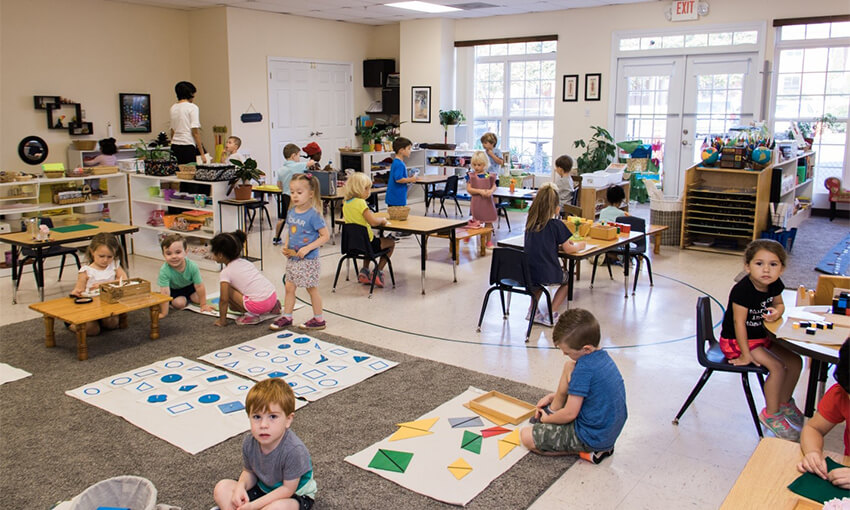The difficult task of the Montessori classroom setup for the new year is underway. While every classroom (home and school) will look different, there are a few guiding principles to keep in mind while putting together your environment.
Setting up a Montessori classroom is a great way to promote independent learning and creative exploration. With the right environment, students are encouraged to learn from each other, work at their own pace, and develop a strong sense of self-worth and confidence.

See things from a child’s perspective
Walk around on your knees if you need to so that you know how things look to them. Make sure that work is accessible and that there are wide enough paths around tables, shelves, etc. for them to walk while carrying their work.
Don’t be afraid to rearrange and retry
I’ve talked a lot about this before, but it bears repeating. Nothing is set in stone; try something, and if it doesn’t work, try it a different way. Ask for someone else’s opinion if you’re really struggling.
Put a lot of thought into the environment
Even when you’re not in the room, be thinking about different options and improvements. Sometimes it helps to get away and not actually be there…that’s often when the great ideas come. Visit another Montessori school for ideas on how to organize and arrange a classroom.
Keep the classroom organized
Make sure you have specific “sections” for each curricular area and arrange the work on the shelves from easiest to most difficult. This helps the children to navigate their way through the myriad of choices during the first few weeks.
Go for form and function

In the Montessori-prepared environment, every part of the room should be beautiful. While there are often budget limitations, it’s important to use attractive, sturdy shelves, tables, and chairs. Whenever possible, materials should be “real” (wood, glass, bamboo) and not plastic. The children will rise to the level of the materials, and show more care in handling them if they are of good quality.
Control the environment, not the children
If you have materials for a special presentation or a very complicated work that would need teacher involvement, keep it out of sight until you’re ready to use it. If you put it out into the room, and a child asks to see it, it’s very disheartening if you’re not actually ready to show them right then.
Also, if there’s work that’s consistently being used incorrectly (or being played with inappropriately), that’s a sign that the children aren’t ready to do it. Put it away and plan on re-presenting it later in the year.
Less is more
Don’t cram the shelves till they’re overflowing. This is confusing and bewildering to the children and makes it harder for them to make good work choices. Better to put out a few exquisitely beautiful materials than a shelf full of mediocre ones. Better to have one gorgeously framed painting than a wall full of cheap posters.
Keep some work off the shelves to put out later in the year. Let the word “breathe” – keep some space between each tray or container. The children will be more comfortable, and so will you.
Conclusion and Final Thoughts
Setting up a Montessori classroom is a journey of discovery and growth. By embracing the Montessori philosophy and implementing the essential elements discussed in this article, you can create a classroom that empowers and inspires your students. From preparing the environment to promoting freedom within limits, each element plays a crucial role in creating a nurturing and stimulating learning environment.
Remember, a Montessori classroom is not just a physical space but a mindset and approach to education. It’s about fostering independence, promoting hands-on learning, and creating a sense of community. So, whether you’re a seasoned Montessori teacher or just starting out, embrace the power of a Montessori education and watch your students unlock their true potential. Happy teaching!

